A Way of Life in the USA
Hunting is a way of life in the United States, and we are here to help you be as successful on the hunt as possible.
Reviews of the Best Hunting Backpacks for 2018
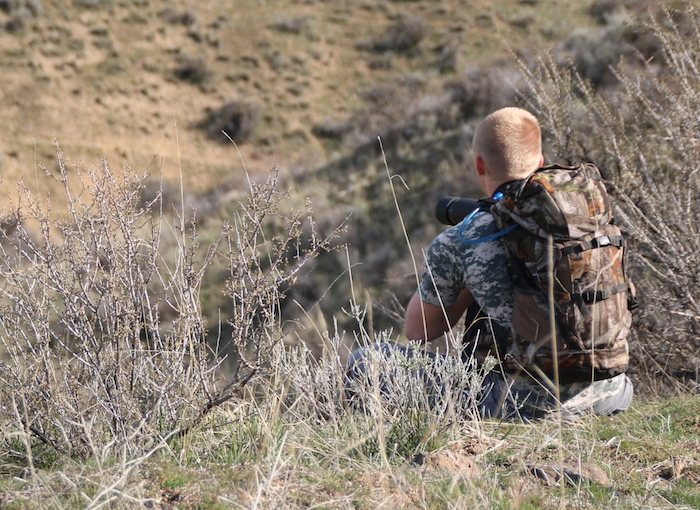 What differentiates a hunting backpack from any other type of pack? Well, there are a number of different features unique to the needs of hunters who may be camping in wet or muddy country for days at a time, and who need to carry specialized gear in addition to the stuff that takes care of their more fundamental biological needs. For example, hunters need a place to put their gun, bow or crossbow. If they’re taking meat, they’re going to need a place for that as well. Rain protection is a major factor, as is pocket organization and the ability to lash stuff to the outside. And the pack also needs to be durable and comfortable under a heavy load.
What differentiates a hunting backpack from any other type of pack? Well, there are a number of different features unique to the needs of hunters who may be camping in wet or muddy country for days at a time, and who need to carry specialized gear in addition to the stuff that takes care of their more fundamental biological needs. For example, hunters need a place to put their gun, bow or crossbow. If they’re taking meat, they’re going to need a place for that as well. Rain protection is a major factor, as is pocket organization and the ability to lash stuff to the outside. And the pack also needs to be durable and comfortable under a heavy load.
In this guide we’ll first examine all of the individual elements that are needed to set a good hunting pack apart from a plain old backpack. We’ll then look at the best individual representative of five different categories of hunting pack: bow hunting, day hunting, deer hunting, elk hunting, and the best budget hunting pack that is priced at no more than $100 at retail. Use the table of contents to find the section you are looking for!
Contents
Water Resistance
The main watchword of the hunting pack is *water resistance*. To be clear, the vast majority of hunting packs are not waterproof; aside from being structurally very difficult and expensive to do with anything that has multiple zippers, waterproofing a pack would be overkill as there are very few circumstances where a hunter would have their gear completely submerged in water. A certain level of water resistance is vital for being caught out in the rain, however, and a good pack should be able to keep your gear dry and functional even in an extended and fairly strong rain. While the material itself usually has a certain degree of water resistance, the primary rain protection
usually comes from a pull-out cover that is zipped away near the bottom of the pack.
Straps and Pockets
The structure of the backpack, in terms of pocket and strap placement, is also very important. But this is a much more individualized area, and will vary depending on what type of hunting you are doing and for how long you are doing it. Rifle and bow hunters will want to be able to strap their gear to the backpack and go hands-free when desired, for example, but the actual optimal layout of the backpack will vary for each. Of course, this also needs to be balanced with your desired level of camping gear and food supply. Crossbow users will have to do a little more backpack research than other hunters will, as most packs are designed to hold either a rifle or a bow. That doesn’t mean you can’t get a crossbow onto many of them, but it will have to strapped down in a way that may be awkward or not entirely secure if the backpack is not expressly designed to handle them.
Securing Meat
There is one aspect of the pack that novices and newcomers often forget about until it is too late — how are you going to carry the meat back? Many a hunter has spent hours carefully researching and planning out their optimal gear loadout only to find that when they hike out into the back country, they don’t actually have adequate space left over to take home what they came for! Of course, this will not be a concern for those who are not taking meat, but those who will be are well advised to consider the storage and transport of it before they are stuck with a raw carcass in the wild and nowhere to put it!
Storage Space
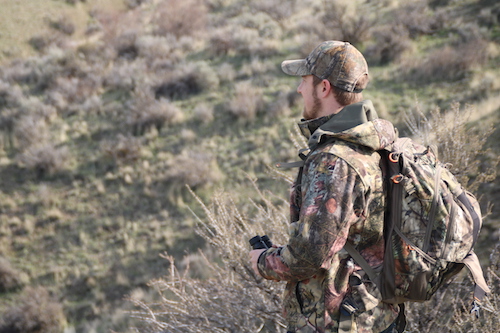 So your gear layout largely depends on how long you’re going to be out camping, and the type of animal you are after. Many people do weekend trips, but trips of up to five consecutive days are not uncommon. You’ll see the overall carrying capacity of packs measured in cubic inches. Around 2000 is in the range of day packs, while packs meant for multiple days can range up to around 7000! If you’re not camping, you can go as low as 1800 cubic inches, and the best of these will be durable enough to actually strap some meat to the outside. For a trip with multiple camping nights and that you’re also planning on packing game out of, you’ll want to lean more toward the range of 3000 cubic inches and up. Meat usually goes into a special shelf or is carried on the outside of the pack, so the actual cubic inch rating of the interior isn’t as important for that purpose, but the pack does need to be durable and have stitching of high quality. For carrying both meat and gear you’ll want a pack that is known to be able to handle at least 50 lbs. without tearing.
So your gear layout largely depends on how long you’re going to be out camping, and the type of animal you are after. Many people do weekend trips, but trips of up to five consecutive days are not uncommon. You’ll see the overall carrying capacity of packs measured in cubic inches. Around 2000 is in the range of day packs, while packs meant for multiple days can range up to around 7000! If you’re not camping, you can go as low as 1800 cubic inches, and the best of these will be durable enough to actually strap some meat to the outside. For a trip with multiple camping nights and that you’re also planning on packing game out of, you’ll want to lean more toward the range of 3000 cubic inches and up. Meat usually goes into a special shelf or is carried on the outside of the pack, so the actual cubic inch rating of the interior isn’t as important for that purpose, but the pack does need to be durable and have stitching of high quality. For carrying both meat and gear you’ll want a pack that is known to be able to handle at least 50 lbs. without tearing.
If it’s your first hunting trip, you’ll likely have the clothing, shelter and weapon covered. It’s the small but critical pieces of gear that people tend to forget about. Some items to consider include a GPS unit, an emergency cell phone that you can afford to lose, a saw, rope, duct tape, a headlamp, binoculars, toilet paper and a means of starting a fire. A solar shower can provide a luxurious way to get clean while camping, but a pack of wet wipes will do in a pinch as well. You should also consider pepper spray, even if you aren’t in bear country. There is always the possibility of encountering aggressive dogs who are unattended, and skunks and raccoons may also attempt to get into your tent or gear at night. Figure out your exact needs ahead of time so you can ensure you have a place for all of this stuff in your pack and that you can easily reach it when you need it.
Fit and Comfort
It’s all well and good to consider your gear needs and the pack layout, but don’t forget individual fit as well! You’ll be carrying a substantial load for a long time, so you’ll need to ensure the pack is comfortable and not putting extra strain on your muscles and joints. An ill-fitting pack will also chafe your skin, usually while simultaneously rubbing the fabric raw and creating holes. While you don’t have to go all-out and get a custom fitted pack, it is important to look for adjustable shoulder / sternum straps and a waist belt. The latter is particularly important for those carrying meat. In the past, packs with external frames were thought to offer the best back support, but these are increasingly rare on the market. Most packs are now supplying their own internal frames that are made of lightweight but strong aluminum or plastic.
Here is a great video that will show you how a pack should fit:
Pack Designs
You’ll also have several different design types to choose from. The most basic type is set up just like the standard day pack or school backpack. This design is usually the most inexpensive by far, but is also the most limited in application and in overall storage space. For those who have a heavier gear loadout and need to bring meat home, your decision is likely going to boil down to either a panel-loading or top-loading design. Panel-loaders are the vertically long packs that you often see traveling backpackers carrying. The name is derived from the fact that they load through a panel in the front rather than through the top. The top loader, of course, has a primary compartment with a zipper that is loaded through the top, and then has an array of various internal and external pockets and pouches. Both types offer the ability to hold a large amount of gear; the panel-loader tends to be better for organizing lots of small stuff and keeping it within easy reach, and the top-loader tends to be the better choice for those who need an extremely durable and weather-resistant pack.
Many hunters, hikers and campers use the three liter water bladder as their standard hydration system, and you’ll find that most backpacks on the market have pouches designed specifically for this size. Of course, some people prefer not to bother with the extra weight of a water bladder at all, and instead pack out iodine tablets to use with fresh water found along the way. That’s a viable approach, but you might want to also pack some sweetened drink mix to mask the taste of the iodine if you go that route. There are many different varieties of zero-calorie drink powders that are just as sweet as the sugary varieties these days.
Warranty, Financial Protection and Brands
One last thing to consider when looking over your pack choices — manufacturer warranty and guarantees. The lowest prices will almost always come from unfamiliar companies based outside of the United States who offer little to no protection on your purchase. These packs will tend to be made poorly and of cheaper materials, and good luck ever getting a replacement or refund if they do not have a physical office in this country! In addition to a reputable brand name, you also want to look for quality guarantees from the manufacturer and a warranty period either from them or from the retail outlet that you purchase the pack from. Generally speaking, if there is a defect that is discovered in at least the first year, somebody should be making you whole for it on your purchase with no further cost to you.
The big names in the hunting game are Eberlestock, Alps Mountaineering, Osprey, Cabelas, Badlands, Gregory, Stone Glacier and Exo Mountains. Generally speaking, you want to stick to one of these known quantities when purchasing a new pack. A big brand name doesn’t always mean that every model they sell is going to be of great quality, but the cheap off-brands are nearly always trouble and will fail on you when you need them most.
The Best Bow Hunting Backpack
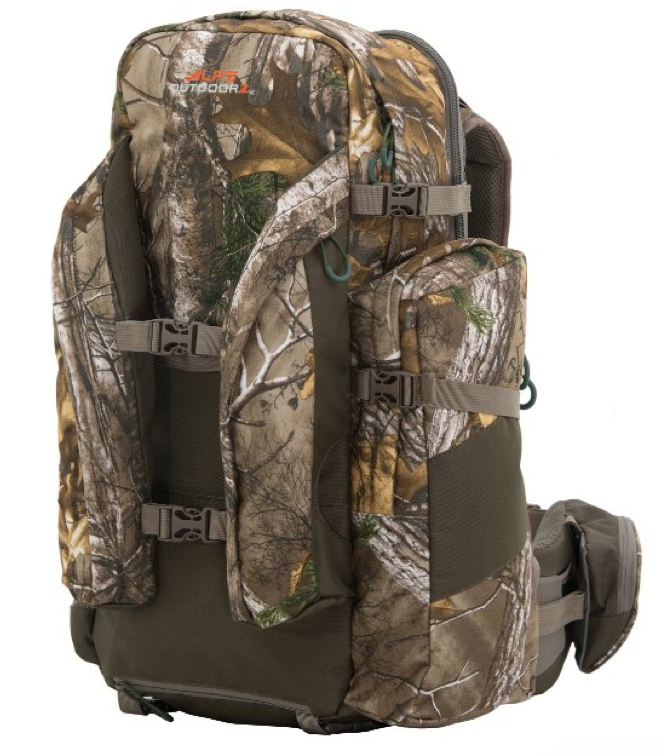 Though the ALPS OutdoorZ Traverse EPS Hunting Pack is designed to handle both rifle and bow hunting, we still favor it for the latter, and the ability to pull double duty is a nice bonus. You’ll pay in the neighborhood of $104 to $120 depending on which color design you pick, which is still considered to be a lower-end price for something in this size and with this range of features and build quality. Surprisingly, the overall quality of this pack puts it in competition with model from other manufacturers that retail in the $300 to $500 range!
Though the ALPS OutdoorZ Traverse EPS Hunting Pack is designed to handle both rifle and bow hunting, we still favor it for the latter, and the ability to pull double duty is a nice bonus. You’ll pay in the neighborhood of $104 to $120 depending on which color design you pick, which is still considered to be a lower-end price for something in this size and with this range of features and build quality. Surprisingly, the overall quality of this pack puts it in competition with model from other manufacturers that retail in the $300 to $500 range!
Aside from carrying weapons, the pack is ideal for bow hunters as it has a vented carrying system that can handle a large amount of meat, keeping it separate from the rest of the pack’s contents. The design makes it easy to carry large loads, like enough clothing for several days in the bush or camera equipment. Most stabilizer and quiver combinations should also easily fit into this pack. And a water-resistant orange rain fly is attached that rolls out of the bottom compartment to cover the entire pack and keep it dry even with extended exposure to rain.
As far as overall storage space goes, you can expect 3300 cubic inches in the 24″ x 12″ main compartment, with an added Expandable Pack Section of 1200 more, totaling 4500 cubic inches overall. The expandable portion is where the gun or bow is primarily meant to be held. There is a separate exterior padded spotting scope pocket that accommodates most of the larger scope models, as well as two quick access pockets on the waist belt and two front wing pockets. Still need more space? There’s an added side pocket and internal pocket in the main compartment as well. Side compression straps also allow you to tack on some camping gear to the outside if so desired, and two buckle straps at the bottom provide a space for a sleeping bag, insulating ground pad or jacket among other possibilities. The pack does not have a large amount of smaller interior pockets for organizational purposes, but adding a small fanny pack to the mix can cover that need. The total dry weight of the empty pack is 6 lbs. 14 oz, and the shipping weight is 8 lbs.
The pack employs the classic and simple “H” frame design, using an internal aluminum frame for support. Individual fit is customized with an adjustable torso range and a foam waist belt. The maximum waist size that the pack can accommodate is 56″, but the straps bear the load by fastening very tightly around the belly, so the larger ends of these waist sizes may experience some discomfort with a large load. You can expect to handle a maximum of roughly 100 lbs., with a more standard large overnighter load of 50 to 70 lbs. bearing up very comfortably. One minor point of contention for those carrying large loads is that the shoulder strap padding is a bit scanty and are possibly going to be too narrow for most as well. Some people have also had issues with being unable to secure the chest strap properly and having it slide up to their neck continually instead. Once you get the pack, it is advisable to go on a neighborhood walk with about 25 lbs. of clothes stuffed in the bag and adjust the torso height to your personal needs. This will also reveal if there are going to be any comfort issues with the straps. The potential strap issues will depend greatly on your load and your body size and type, so overall we still feel the pack is the top recommendation. If your test run reveals that the strap system doesn’t work for you, it should be no problem to return the pack.
One other potential hangup is with crossbows. Though people have been able to attach a crossbow to these bags, the straps were not really designed with them in mind. The extension that holds the gun or bow can potentially hold some models of crossbow, but you will have to be careful when attaching the compression straps and the fit may not be entirely secure. The crossbow will also have to be attached with the tip up. A rifle also may not be held at the proper angle unless the pack is full or close to it, but this is less of an issue with a standard bow.
One last limitation — the pack is not fully made from ripstop nylon. Much of it is a heavy suede, very durable and unlikely to get snagged and tear, but any small holes that do happen to develop will likely require immediate attention and it will be wise to keep a small sewing kit with the pack for emergencies.
The Best Day Hunting Backpack
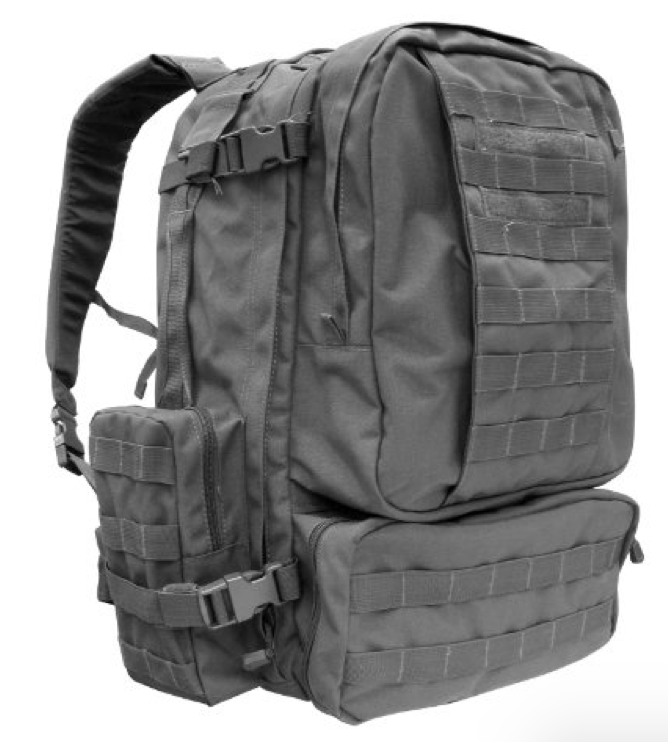 When it comes to a day pack, your main needs are going to be a little different than the other types of packs listed here. First of all, a low price is a big consideration — you really should be able to get a quality day pack in the neighborhood of $100. You are also looking at shorter trips, less gear, and likely less of a need to attach your bow or firearm directly to the pack. What you really want it to do is be comfortable, not rip and have adequate space while still not costing an arm and a leg.
When it comes to a day pack, your main needs are going to be a little different than the other types of packs listed here. First of all, a low price is a big consideration — you really should be able to get a quality day pack in the neighborhood of $100. You are also looking at shorter trips, less gear, and likely less of a need to attach your bow or firearm directly to the pack. What you really want it to do is be comfortable, not rip and have adequate space while still not costing an arm and a leg.
For those criteria, we like the Condor 3 Day Assault Pack. A nice bonus of this pack is that the design works for hunters on short trips, but it’s also versatile enough to be used for many other purposes, even as a bookbag for school. The padded hip belt is removable, so you can sub in a tactical belt if desired as well.
The Condor 3 Day Assault clocks in with a 20.75″ x 12″ x 6″ main compartment, a 12.5″ x 6″ x 3″ bottom compartment and two side pockets that measure 9″ x 5″ x 2.5″ each. There’s also a separate interior compartment at the back of the main compartment that sits up against your back and is designed for hydration systems like the Camelback (with holes provided to run the hose through the top of the pack), but can fit all sorts of flat objects including a laptop or tablet. The bottom compartment is subdivided into three different smaller pockets to easily sort your documents, maps, electronic gear and whatever else you need. Side compression straps and D-rings on the shoulder straps also make it possible to attach a small amount of gear externally. Two of the nicest features we enjoy on this pack are a double zipper system for the main compartment (making it easy to get into the bottom of a full pack), and the foam back panel that provides support without the extra weight and bulk of a frame system. In total you’ll get seven compartments with this day pack.
In regards to its closest competitors in terms of size and price, we picked the Condor 3 Day Assault because it’s larger and more rugged. We also liked the interior design better in terms of sorting and accessing a variety of gear. The other packs will be lighter, but will not be nearly as damage-resistant as this one is. This pack is good for carrying in the neighborhood of 40 lbs. maximum; if you need significantly more than that you would be better served looking at a larger model.
As mentioned previously, the need to strap on a bow or rifle usually doesn’t overlap much with the need for a day pack specifically. However, if you do need a day pack that you can strap your weapon to, it is possible to potentially attach a scabbard to the bag using one of the side compression straps. Just be aware that Condor doesn’t offer an officially supported solution for this need, so you’ll have to cook up something on your own.
One important thing to look out for when ordering through Amazon is that there are reports of counterfeit packs of this specific design being sold there by third-party sellers. These packs look identical to this Condor model, but are made by someone else from much cheaper materials and will wear out and rip much more quickly. If the order is fulfilled directly by Amazon, then it should be safe. However, if buying from a third-party merchant who lists through Amazon, verify that they have a good reputation and legitimate positive customer reviews pertaining to the pack before ordering. The Condor logo will also be visible on legitimate bags, whereas the knockoffs tend to have the logo of some no-name company on them.
The nice look of the bag and the larger amount of space than usual are what really makes this pack a winner. The design of the bag keeps gear fairly well organized and gives you a good range of sorting options despite the limited overall space.
The Best Deer Hunting Backpack
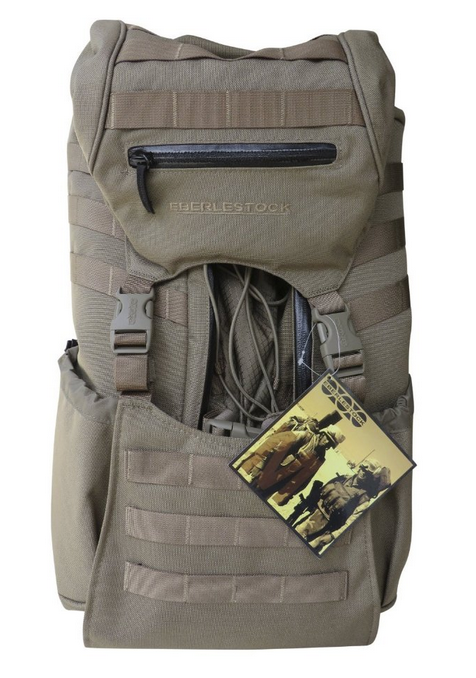 Though there are larger deer hunting backpacks, the 1800 ci Eberlestock X2 Hunting BagPack is capable of handling a full animal (once quartered) along with a respectable amount of gear. It also comes in a range of eight different colors, a set of options not commonly found among hunting backpacks. All color options are similarly priced with the exception of multicamo, which costs a bit extra. The pack clocks in at 6 x 14 x 22 inches and weighs four and a half pounds, with a total size of 22.5 x 16 x 6. Four external retention straps make it easy to add a tent and sleeping bag without sacrificing any compartment space.
Though there are larger deer hunting backpacks, the 1800 ci Eberlestock X2 Hunting BagPack is capable of handling a full animal (once quartered) along with a respectable amount of gear. It also comes in a range of eight different colors, a set of options not commonly found among hunting backpacks. All color options are similarly priced with the exception of multicamo, which costs a bit extra. The pack clocks in at 6 x 14 x 22 inches and weighs four and a half pounds, with a total size of 22.5 x 16 x 6. Four external retention straps make it easy to add a tent and sleeping bag without sacrificing any compartment space.
Carrying meat is more effective on the outside of this pack than on the inside, thanks to the FlexChassis system that allows you to both strap external loads to the pack and to fold it out as a seat when not otherwise in use. You can also strap both meat and gear down with the set of oversize compression straps rated to handle heavy loads. The base design is optimal for a rifle, but you can add on the optional ARCG ButtBucket to accommodate a compound bow. Both full-sized hunting rifles and shotguns can be carried with the appropriate scabbard, which can be attached between the central compartment and either of the side pockets . The interior sports an aluminum frame that keeps things light while still providing very good back support. Two ample side pockets provide room for a spotting scope, extra pockets on the waist belt keep all the smaller stuff within easy reach, and the hip pockets can actually be reached from the outside while the pack is on. Water bladders of up to three liters each will also fit on the side pouches by way of plastic clips that are included with the pack.
One minor issue with this pack type is that the design does tend to skew toward hunters that are no more than six feet tall. The pack might sit a little high for those who are taller, but you can always load it up a bit, take it for a spin around the block and make a return within the return window if it isn’t comfortable. Something that ties into the limited fit range is that the pack does not allow for torso adjustment. Though NT-1 waterproof microfleece fabric is used the frame can still make noise, possibly too much for your approach, but it is possible to correct this easily with tape. Aside from the potential frame issue, this in-house fabric produced by Eberlestock is extremely quiet. Making sure the overall load is well balanced also can help with the noisy frame issue.
This pack will function best when packing out ultralight gear, but still holds much more than you would expect to look at it from the outside thanks to the double wing design. Triple stitching and extra-durable material is one of the main advantages this pack has over others in the same general price range, as you can hang a surprising amount of game off of it without a problem. It’s also surprisingly water resistant with a uniquely designed zipper system that is great about keeping rain out. The pack is even versatile enough to be used as a day pack for other purposes, and those with larger waist sizes will be pleased to find it has been designed to be comfortable for them. If the height issue doesn’t set you back, this is definitely a top choice in this category, and the layout seems to draw rave reviews from everyone who uses it.
The Best Elk Hunting Backpack
The central issue for an elk hunting pack is the sheer weight you’re going to be carrying. If you’re based out of a nearby day camp, the type of pack doesn’t matter so much. If you’re hiking and hauling long distances and you don’t spend the extra money for a pack with even load distribution and materials of high quality, you’re really going to wish you had once you’re out there. The Eberlestock X2 (mentioned above) could double for this purpose as well, but the Elk Pack packs a little extra weight and ruggedness that really helps when things are tough. There’s also a bit of a charity kicker for this one — with each purchase, Eberlestock will donate some of the profits to the Rocky Mountain Elk Foundation, a non-profit conservation group.
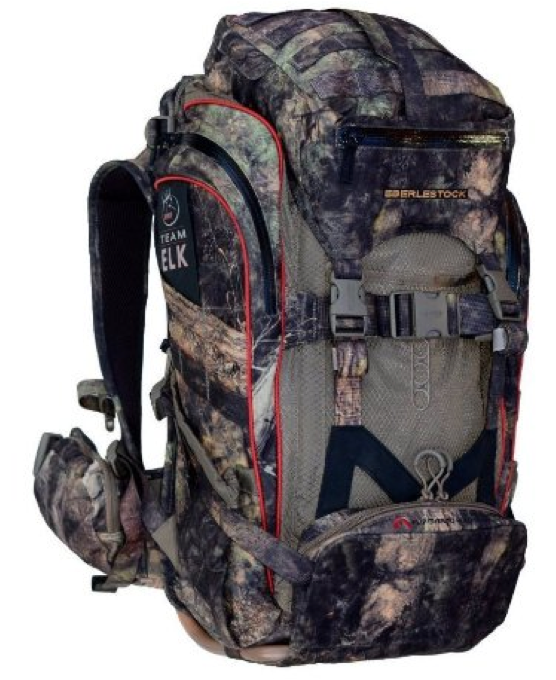 So the Eberlestock M5 Team Elk Pack is the most expensive of the packs on our list, but the investment is worth it for elk hunters if the circumstances merit it. It also has a much heavier dry weight than any other pack on this list, but you’re buying durability and support to carry serious game for a significant distance. The pack boasts a contoured design with an Intex tubular aluminum frame for extra body support and super durability to ensure those heavy loads don’t pull everything apart. The overall storage space is 3,100 cubic inches at a total measurement of 23 x 11 x 9.5. You’ve also got the option of two popular color schemes — Timber Veil and Western Slope.
So the Eberlestock M5 Team Elk Pack is the most expensive of the packs on our list, but the investment is worth it for elk hunters if the circumstances merit it. It also has a much heavier dry weight than any other pack on this list, but you’re buying durability and support to carry serious game for a significant distance. The pack boasts a contoured design with an Intex tubular aluminum frame for extra body support and super durability to ensure those heavy loads don’t pull everything apart. The overall storage space is 3,100 cubic inches at a total measurement of 23 x 11 x 9.5. You’ve also got the option of two popular color schemes — Timber Veil and Western Slope.
The pack is capable of handling two bone-in elk quarters at a time, though it’s best to have a low load of other gear if putting this level of strain on it. One elk quarter plus a normal gear loadout is no problem for it to handle. The total amount of space while hauling meat makes it more optimal for day trips than for overnight camping, as it does not have a lot of vertical stacking space. You also may have trouble getting the largest of the spotting scopes into the side pockets, though they handle most models well and are also perfectly suited for hydration bladders. Many different small exterior pockets make organization of small gear items a breeze with this pack, however.
Both bow and rifle hunting can be accommodated, and one unique feature of this pack is that it is possible to do this at the same time! The bow can be strapped to the back while the rifle is held in a scabbard. The rifle scabbard is included and folds away when not needed. The included shooter’s harness can also be adjusted vertically to fit any torso length.
Eberlestock partnered with the Rocky Mountain Elk Foundation not just for charity purposes but for tips on the fundamental design of the pack, drawing on the organization’s wealth of knowledge generated by their conservation efforts. You can really see the difference this collaboration has made on the pack quality and design. The pack overall is water-resistant, and there is one fleece-lined waterproof pocket for critical gear such as electronics. The padded and breathable design earns it high marks as well as the organization of the four internal pockets.
The Best Hunting Backpack Under $100
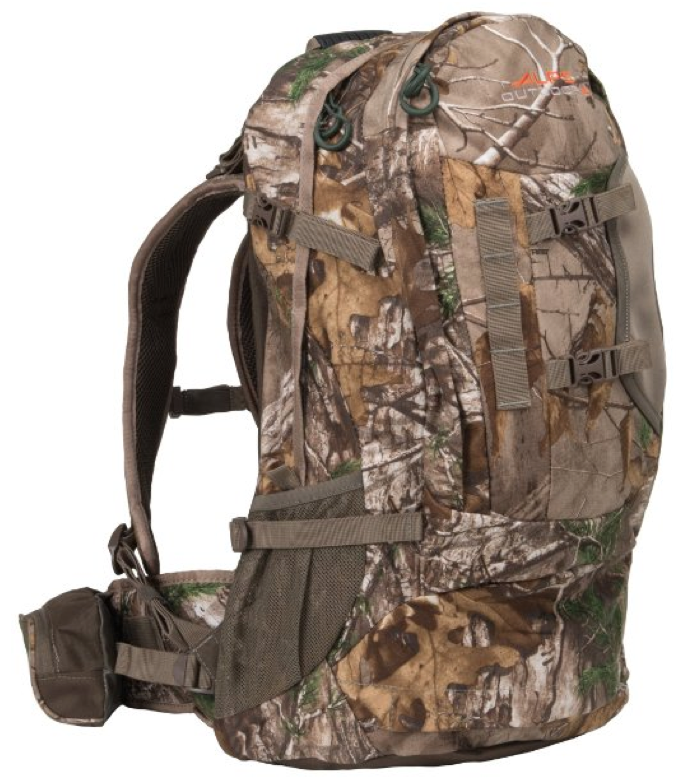 For a good all-around hunting pack that can be adapted to most purposes, check out the ALPS Outdoorz Realtree Xtra HD, which clocks in at just under a hundred dollars through Amazon. It’s a vertically long top-loader that has a great variety of pockets and is well-suited to keeping your gear organized. It also has a nice dual direction back and frame structure that offers firm support while also providing plenty of ventilation, more so than is usual for this style of pack. Pockets on the padded waist belt provide even more carrying capacity along with webbing loops, a built-in rain cover and a hydration pocket that will fit just about any standard three liter bladder. Your total capacity is going to be 2500 cubic inches, at a total dry weight of just over four pounds.
For a good all-around hunting pack that can be adapted to most purposes, check out the ALPS Outdoorz Realtree Xtra HD, which clocks in at just under a hundred dollars through Amazon. It’s a vertically long top-loader that has a great variety of pockets and is well-suited to keeping your gear organized. It also has a nice dual direction back and frame structure that offers firm support while also providing plenty of ventilation, more so than is usual for this style of pack. Pockets on the padded waist belt provide even more carrying capacity along with webbing loops, a built-in rain cover and a hydration pocket that will fit just about any standard three liter bladder. Your total capacity is going to be 2500 cubic inches, at a total dry weight of just over four pounds.
Your main compartment is basically divided in two, with one portion devoted to the collection of smaller pockets to keep your gear organized, and the other providing space for either a hydration bladder or your tablet or laptop. The weapon is secured to the pack via a drop down pocket that is designed to accommodate both full-sized rifles and bows.
The fit is fairly generous, accommodating torso sizes up to about 50 inches. The belly strap is capable of handling larger waist sizes as well. It’s available only in one design (the Brushed Realtree Xtra HD), but this is a very good-looking all purpose camo pattern that most buyers seem to be very happy with.
For weight distribution, well-organized pockets, build quality and the secure carrying of a weapon we believe this is the best budget pack that you can get from Amazon at present. You’ll also find it to be comfy under a moderate load regardless of your size and shape, and the ventilation system really is noticeably better than most other packs. The one drawback is that this pack is not suited for carrying really heavy loads, such as a full load of gear plus a large quartered animal (though that really should be expected for anything in this lower price range). Not to say that it can’t be made suitable for day hauling of larger game, but if you have to cover a lot of ground with something like an elk or a moose on your back you’ll definitely want to budget a little more money toward your pack. Otherwise, this durable and comfortable pack can be adapted to pretty much anything else you want to do with little effort.
Conclusion
Though these are not the only five categories that hunters will find themselves shopping in, they represent a broad group of popular types of hunting and common needs for those going out into the wild. If you’re entirely new to hunting and are in the market for your first pack, the most important thing to do is first sit down and figure out your exact gear needs, then base your choice of pack primarily on that information. If you’re planning on camping overnight, you can generally rule out a day pack unless you have a central campsite that you are driving directly into and are only going out for day hunts that you immediately return from. Day packs will also struggle with heavy loads of meat unless they are unusually durable. If you need to carry gear plus a large animal, you definitely want a pack optimized for something on the order of elk or moose, and you can expect to spend more for the extra size and durability that these packs have to be made with.
We hope this guide has been helpful in finding the pack that is right for you. Good luck and happy hunting!
